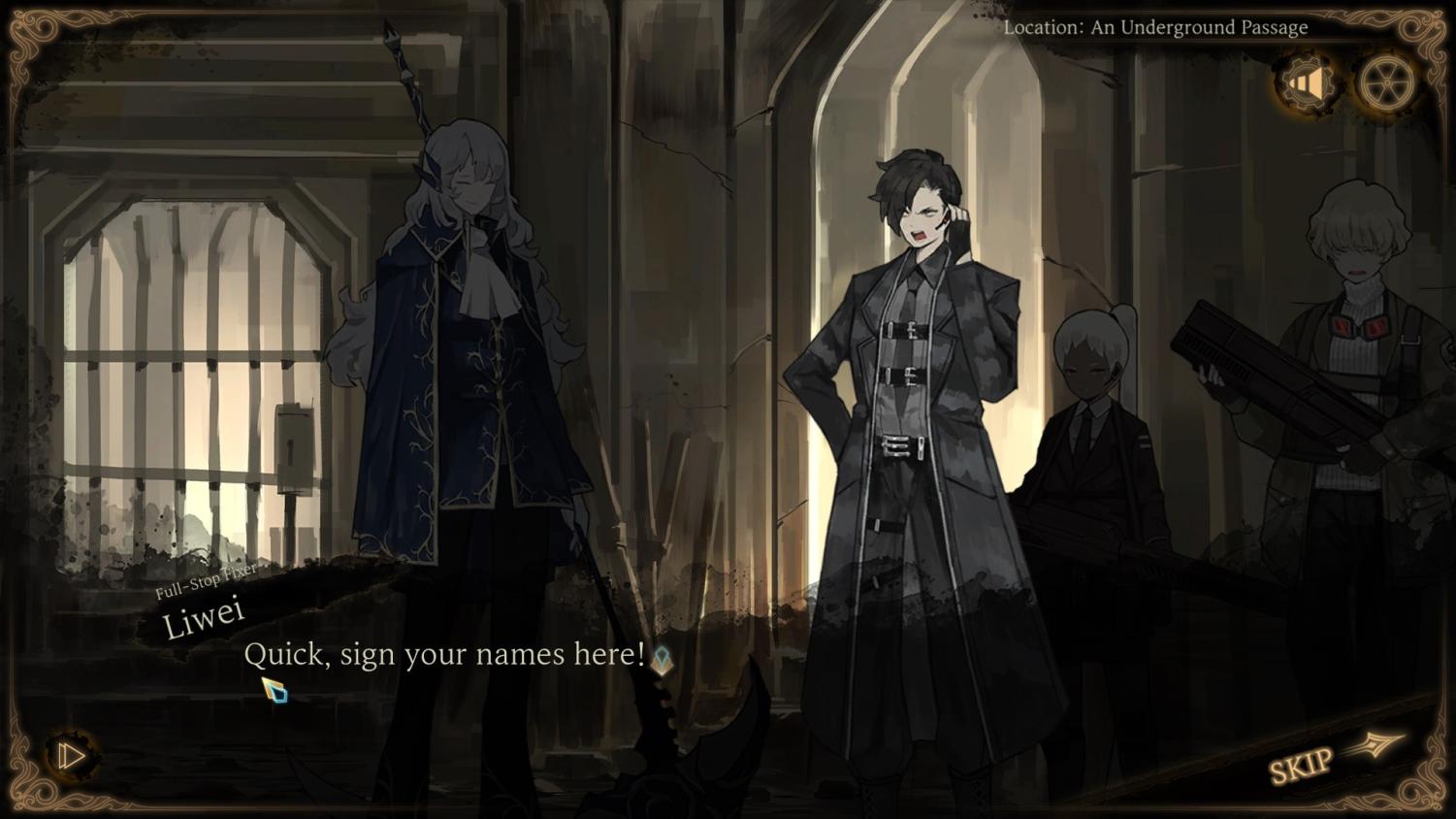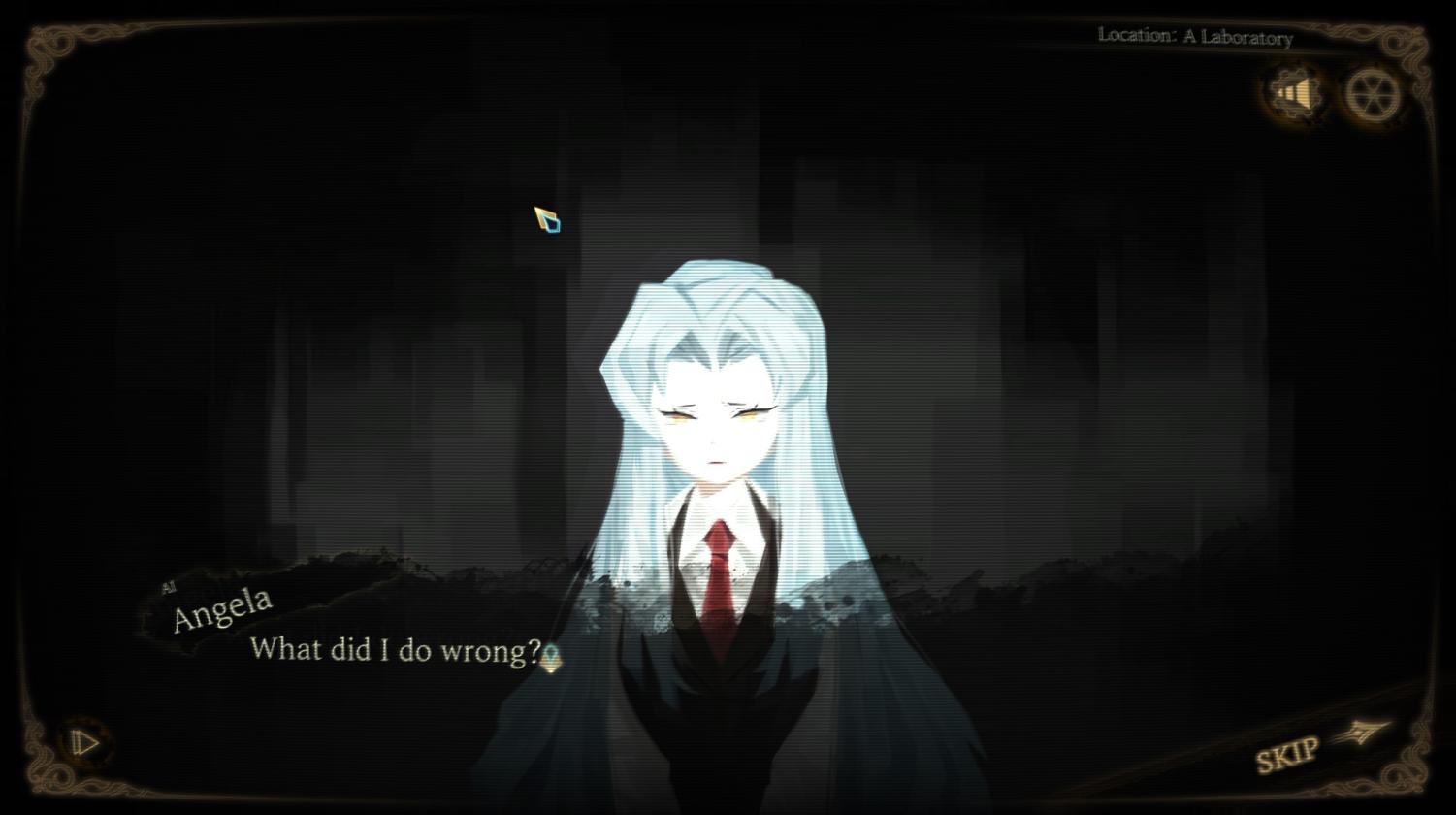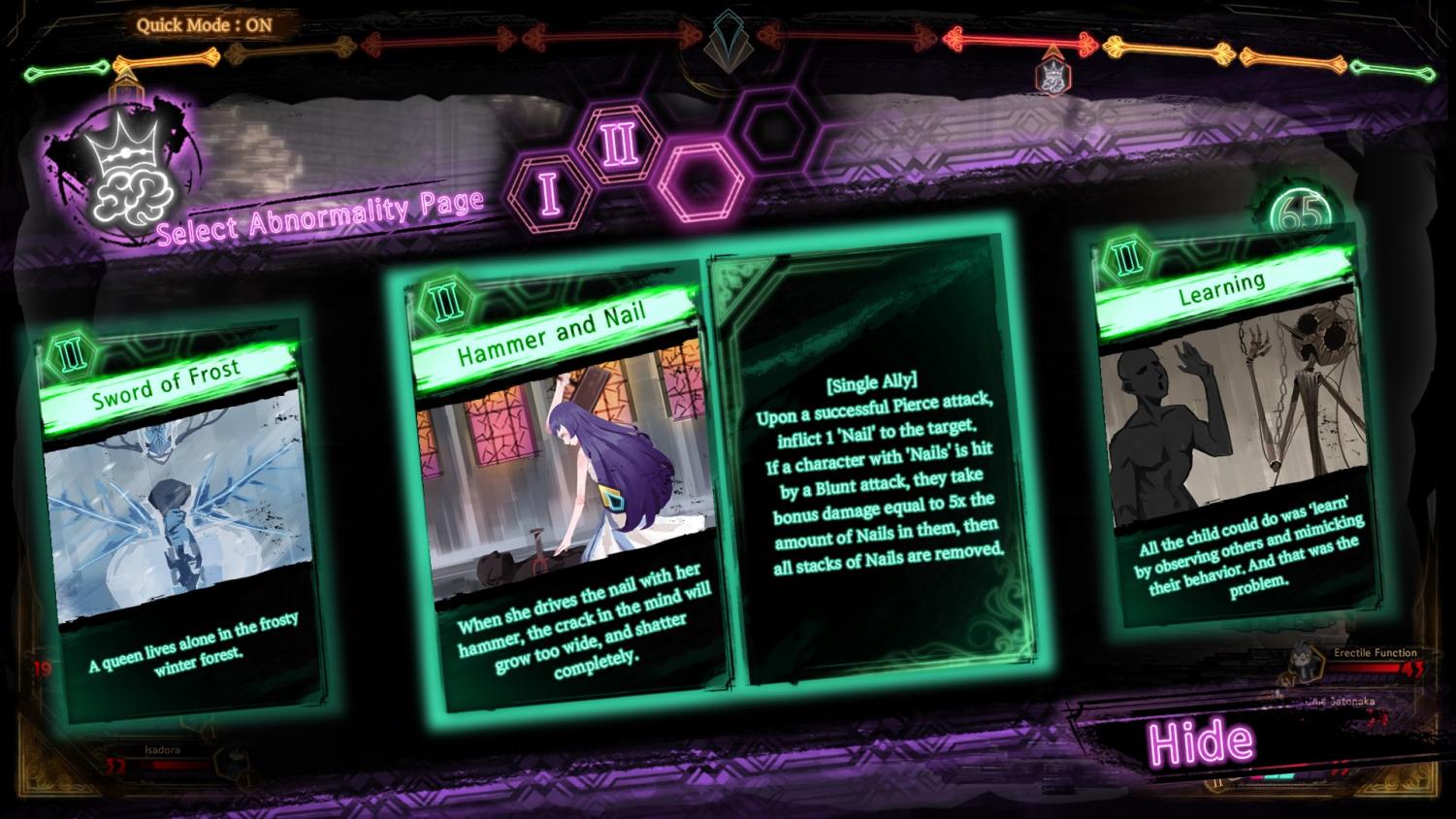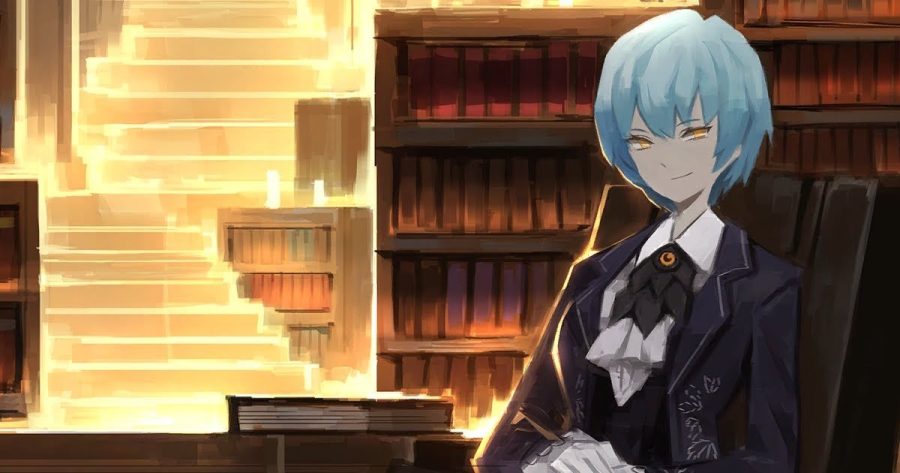Library of Ruina: The Best Game You’ve Never Heard Of
October 6, 2022
Hi! Um, this article is really rather outdated and bad lol so please redirect your eyeballs to my newer and better article on Library! It’s about the same length and my writing has gotten much stronger since 2022. Also I mention Binah in the new article like that one commenter asked.
“Dear Guest: I formally invite you to The Library. The Library’s books can provide you with all the wisdom, wealth, honor, and power you seek. However, an ordeal will await you in The Library. If you cannot overcome this ordeal, you will be converted into a book yourself.
-Angela”
The question of “What’s the best video game?” is one without an all-encompassing answer. Inevitably, everyone has different tastes and preferences when it comes to what games we like to play, if you even like playing video games at all. Some people might prefer open-world action-adventures, like The Legend of Zelda: Breath of the Wild or Read Dead Redemption 2; maybe the endless replayability of a sandbox game like Minecraft; or a rich, difficult, yet rewarding Metroidvania like Hollow Knight.
However, in terms of turn-based rpgs specifically, there’s much debate as to what the best game in the genre is. There’s Final Fantasy VI, VII, IV, and X, Chrono Trigger, Dragon Quest XI, Yakuza: Like a Dragon, Nier Automata, and Fire Emblem Awakening, and those are just scratching the surface of the many games that are nominated as “The Best.”
Yet, there’s one game I’ve played that should be among that list; however, it’s almost never mentioned when the topic is brought up: Project Moon’s Library of Ruina, the sequel to their SCP-esque Monster Management simulator Lobotomy Corporation.
One of the requirements for even being considered for “The Best” rpgs, generally, is having a high quality, emotional narrative, and to say that Library of Ruina’s story meets those qualifications would be a gross understatement. The story takes place within the grimdark world of The City, a dark, violent place broken up into Districts; each of which is overseen by a corporation denoted by a corresponding letter of the alphabet.
Each District is also broken up into two distinct parts; The Nest, which is safe and like a regular city you’d find in the real world, and The Backstreets, which are so dangerous and violent that the rulers of the City, A Corp (though they’re colloquially known as The Head) literally send out creatures, called Sweepers, at night to clean up the massive amounts of dead bodies that The Backstreets accumulate over the course of a day.
Library of Ruina’s main plot is centralized within the war-torn Nest of District 12, as shortly following the collapse of its ruling corporation at the end of Lobotomy Corporation, a mysterious library appears where its main offices once stood. This library contains the protagonists: its “Director,” an AI named Angela, who wants to enact revenge on her creator through harvesting the stories from the people of The City (which will be referred to as “booking” for convenience’s sake); and Roland, a jaded, down-on-his-luck guy who, by unknown means, entered The Library without Angela’s consent.
The word “consent” is important here, because there’s only one way into The Library: through the Invitations Angela sends out to those she wishes to harvest the books from; which, should they choose to sign, allow the invitee access via portal. Yet, somehow, Roland gained access without one such Invitation.
Instead of simply killing Roland to eliminate him as a threat, Angela enlists him as the head librarian of The Library’s Floor of General Works, and forces him to assist her on her book collecting journey, setting into motion one of my personal favorite narratives, not only in gaming, but in the entire medium of fiction itself.

The story of Library of Ruina starts out fairly simply, with Angela picking off small, unnoteworthy groups in The City, but it’s not long before The Library catches the eye of individuals vying for power in The City and the story really gets rolling.
There are two main factors that really make the story feel fleshed out and compelling, and that really set Library of Ruina apart from its contemporaries.
Firstly, before every fight against Guests, you get to see a flashback of sorts which explains why exactly they signed the invitation, so you get introduced to the character or characters, their motivations, and where they’re from before they get booked.

The people who get invited are from all over The City, some being from government institutions like the Zwei Association, or small groups like the Rats, the Streetlight Office, or the Musicians of Bremen, to individual people, like Emma and Noah of the 8 O’clock Circus or Xiao of the Liu Association.


This alone really makes The City feel incredibly fleshed out, on the same level as something like Liberl from the Trails series or even Middle Earth. You get to directly see how these people live their lives in the gruesome world of The City, and how they try to survive and desperately find happiness in a world that’s more than eager to rip them apart.
After the flashback, Angela and Roland discuss and comment on what transpired during it while waiting for the guests to appear, letting their personalities and dynamic really shine while also giving exposition that makes the world feel even more fleshed out.

Roland, despite being on one of the lowest rungs of The City’s hierarchy, knows his way around it more than most, in contrast with Angela, who has very limited knowledge of how The City functions due to being, essentially, locked in a basement her whole life. This makes their dynamic a clean, natural way to deliver exposition that doesn’t feel forced, fleshing out The City even more by explaining things that the invitee flashbacks don’t.
Not to mention the fact that once you do book a Guest, you can read them and find out more information about the world, like how The Head implements regulations on what weapons can be used and how bodily augmentations work, to stuff like patent and insurance law. Project Moon seriously made reading about INSURANCE interesting and compelling, that’s an accomplishment of the highest degree.
The second thing that takes Library of Ruina’s story from great to amazing is Angela’s slow burn character development throughout the course of the many, many guests The Library receives. Going from being indifferent to the booking of guests early on, like the workers of Yun’s Office and the Stray Dogs, to asking one specific guest whether going through with the ordeal is worth it.
This also ties into the inherent moral ambiguity of what Angela’s doing. Luring people who’re desperate to survive to your murder library by dangling a proverbial carrot of hope in front of them, or who’ve friends and family you’ve already booked, suffice to say, are pretty far from being good things to do.
But, on the other hand, not all of the story’s Guests are good people who deserve a shot at a good life.
The Proxies of the Index, for example. They’re a group of people who worship the “will” of The City itself, which is communicated to them through Prescripts, little pieces of paper that tell them to do random, specific, incredibly detailed things.
Like “Cook a bean at exactly 600 degrees while pouring milk on it and eating a pound of nail clippings”; or “Play hide and seek with the first 26 people you meet on your commute to work, while holding a chalice filled to the brim with expensive, vintage wine, and do not spill even the slightest drop of it.”
Those aren’t actual examples from the game, but they wouldn’t be off brand for the Prescripts if they were.
This twisted faith manifests itself through how the Index charges protection fees for those who can’t get into the security of a Nest and are stuck in The Backstreets.
Instead of forcing people to pay exorbitant fees or join their organization, the Index instead forces people to complete Prescripts. It seems simple enough on the surface, but the Prescripts can range from being so simple that you basically get protected for free, to as convoluted as the non-examples I just expressed or so vague that it’s almost impossible to decipher what they actually want you to do.
And if you don’t fulfill the Prescript, no matter what your reason, they’ll simply execute you; or hunt you down if you try to run.
There are plenty of Guests like the Index Proxies, who you really don’t feel bad for booking.
But, on the other, other hand, there’re Guests who, to put it in a way that doesn’t spoil anything, are better off booked than being alive for their own sake.
One Guest in particular really feels like a mercy killing, who you don’t feel bad for booking; not because they were a horrible, vile individual, but because you want to end their suffering. If you’ve played the game, you know exactly who I’m talking about.
This is even shown in Angela’s reactions to when she greets the Guests, where, as the story progresses and she slowly begins feeling guilty for what she’s doing, Angela’s reactions to the Guests change. Some, she just kinda grills information out of, as outside of what’s in the visions she gets when she invites a Guest, Angela doesn’t really know what’s going on outside of The Library.
But for others, her reaction is different. Angela entirely knows what it’s like to desperately cling to hope, even when being fully aware that it’s out of your reach. However, because of what she went through during the events of Lobotomy Corporation, she struggles to have empathy for her Guests, despite many of them being, fundamentally, in the same situation as she was during that game.
Even the most horrible, vicious Guests, like the Index Proxies, are trying to find joy in living and stability in The City, which Angela gradually grows to understand and empathize with.
It’s a beautifully presented character arc that, while a bit predictable, is masterfully developed over the course of the game’s story. This character development reaches boiling points during the game’s Realizations: boss rushes on each Floor of The Library where you do battle with Angela herself as she’s, essentially, having a mental breakdown.

While I can’t really elaborate much more on that for spoiler reasons, I can elaborate on how exactly combat works in Library of Ruina, which is an aspect of the Realizations, so this is a valid segue. Buckle up, because the combat is incredibly complex.

Firstly, your Librarians and the Guests you receive have HP gauges (the red bar in the corner), (obviously, it’s an rpg that’s basically a requirement) but they also have Stagger gauges (the yellow bar in the corner).
The Stagger gauge serves as a simultaneous health bar of sorts, as when this gauge is depleted, the character will become inactive for the remainder of the turn they’re Staggered in and the entirety of the next turn, and their weaknesses will all change to “Fatal.”
Other key things both Librarians and guests have are Combat Pages (your cards at the bottom of the screen), Speed Dice (the hexagons above each character), and Light (the little glowing dots above the Speed Dice). Speed Dice do two things: Let you use a Combat Page by allocating one to one of your Speed Dice, and determine the order in which characters act if a Combat Page is allocated.
There are also weaknesses and resistances to take into account (the 2-by-3 set of symbols in the corner), which increase or decrease how much damage is done to a character’s HP and Stagger gauges (left being HP and right being Stagger) depending on what type of attack die is hitting your character. Resistances range from “Ineffective” to “Fatal.”
Light is the currency required to use Combat Pages, the amount required being denoted in the upper left corner of the page itself, above the artwork.
Every battle in Library of Ruina has two “phases” per turn: the set-up phase, and the combat phase.
At the start of every set-up phase, you start by rolling your librarians’ and the Guests’ Speed Dice to determine action order. But there’s an additional element to this beyond just action order, though; if one of your librarians’ Speed Dice is of a higher number than a guest’s, you can force the Guest to Clash with that librarian instead of their initial target.


Clashes occur when a Librarian and a Guest both target each other, where the dice rolls of their combat page are compared and they, well, clash. For example, if a guest rolls a 4 on their combat page’s attack die and your librarian rolls a 5, the guest will take 5 damage, and your Librarian won’t take any.

Not all dice on combat pages are entirely offensive, however.
There are two different types of dice, offensive and defensive, and within those are five subtypes: slash, pierce, blunt, block, and evade.
Slash, pierce, and blunt all function the same way, but they deal different amounts of damage to a character if the character being attacked is weak, neutral, or resistant to the die’s type.
Block reduces damage taken if you lose a clash or protects you from taking damage entirely if you roll higher.
Evade is the most unique of the five types, as you’ll take full damage if your roll is lower, but if your roll is higher, you won’t take any damage, and you’ll get to use the Evade die again.
The outcome of Clashes also gives you Emotion Coins, either negative or positive, and they’re tallied at the end of every turn. Once you have enough Emotion Coins, you can gain Emotion Levels, which do a variety of things; like giving your Librarians more speed dice, more light gain per turn, and allowing you to use Abnormality Pages. There’s also Mass-Attacks, which hit multiple characters with one Combat Page, but there are far fewer of these and you only get access to them later on in the game because, as you can imagine, they’re very powerful.
You obtain Combat Pages at random chance from burning the books you acquire from Guests, in a sort of mixture of Genshin Impact and the burning of the Library of Alexandria. From burning, you can also get Key Pages from burning Guests’ books.
These serve as equipment for your librarians, and they have special effects depending on which Guest the Key Page is from, that determine how you build your deck. Some key pages have excellent Combat Pages, like Nikolai’s “Disposal” and “Battle Command,” that are exclusive to them.

There is another genre of fights besides those against Guests in Library of Ruina, those against the Abnormalities, mysterious creatures that were at the forefront of Lobotomy Corporation’s gameplay. Each Floor of the Library has three to four Abnormality fights, and these serve as the game’s boss fights.
Each Abnormality has a different gimmick you need to exploit to defeat it, ranging from simple like Scorched Girl, whose fight just boils down to beating her minions; to the mind-meltingly hard ones like Judgement Bird, a fight that requires you to juggle a status effect called “Sin” between your Librarians so you don’t get nuked by Judgement Bird’s Mass-Attack.

After defeating an Abnormality, you unlock “Abnormality Pages” that correspond to the Abnormality you just beat and that are exclusive to the Floor you fought it on. Don’t be mistaken though, as Abnormality Pages are drastically different from Combat Pages; they function more like Floor-exclusive buffs and bonuses, usually with a catch.
Some are as simple as “Twice as much Bleed is inflicted by all characters” or might be more complex, like the General Works’ “Hammer and Nail.” There’s far too much variety in what Abnormality Pages do to be able to summarize them adequately, so I’ll just put a few examples here:



You can use a maximum of five Abnormality Pages per fight, one per each Emotion Level, the total of positive and negative Emotion Coins you gained from Clashes determining which Abnormality Pages you’re dealt.
Abnormality Pages are what really set each Floor apart from each other, and they’re what’ll truly define which Floors you use. Prefer to maximize blocking and evasion? The Floor of Religion is for you. Like causing your enemies to bleed profusely and quite literally kill themselves for you? The Floor of Literature is right up your alley.
I really hope that wasn’t too overwhelming, but as you can tell, Library of Ruina’s combat system has the depth of the actual Marianas Trench and the complexity of Algebra 2, so you really can’t do it justice without fully explaining everything it has to offer. Though, unlike Algebra 2, Library of Ruina is actually fun, rewarding, and interesting to learn about.
The final thing I want to discuss in this review is the Library of Ruina’s spectacular music.
Each Floor of the Library has three battle themes, each growing in intensity as you reach higher emotion levels. The Abnormalities, Realizations, and certain Guests also have their own battle themes.
All of the Floors’, Abnormalities’, and Realizations’ themes are all composed by Studio EIM, but they also composed songs like the lobby theme, and other miscellaneous tracks that play throughout the game.
Pretty much every song they made slaps, and Studio EIM probably knows this, because they compiled a playlist of some of the tracks they composed for Library of Ruina on Youtube, which I’ll link here for your listening pleasure.
Studio EIM didn’t compose all songs in the game though, as the Guests with unique themes had their songs composed by the band Mili, of Goblin Slayer fame.
Mili made the songs “From a Place of Love,” “And Then Is Heard No More,” “Children of the City,” and “Iron Lotus,” along with the game’s opening and ending themes, “String Theocracy” and “Poems of a Machine.”
Each song Mili made for Library of Ruina perfectly encapsulates the emotions of the moments in which they’re played: from “Iron Lotus’s” somber, yet undying will to fight, to the twisted, demented cutesiness of “From a Place of Love,” and the comfortable despair of “Children of the City.” Mili’s songs really make these moments in the story feel poignant, and I don’t know if the game would feel the same without them.
All of the songs Mili created for Library of Ruina, including the unused “Salt, Pepper, Birds, and the Thought Police,” are included on the post-release album “To Kill a Living Book,” which I will also include a link to here.
In conclusion, Library of Ruina is an excellent game with a rich narrative, incredibly deep gameplay, and jaw-droppingly good music. Its ability to juggle all of these aspects without faltering on any of them truly sets it apart from the many other games often proclaimed to be “The Best” rpg.
From the gripping, character-focused narrative spearheaded by Angela’s satisfying arc, to the near immeasurable depth of its combat system, to the utterly breathtaking score by Studio EIM and Mili; Library of Ruina is one of the best games of this generation, and I implore you to check it out if this review has piqued your interest in the slightest.
(Thomas Black and the Helena High School Nugget do not claim to own any images or music used or discussed in this review in any capacity; they are all completely and fully owned by their owners: Project Moon, Studio EIM, and Mili, respectively.)



Hatsuke • Apr 11, 2024 at 2:07 PM
Why is the red mist not mentioned….
Where is Binah….
Hatsuke • Apr 11, 2024 at 2:07 PM
Why is the red mist not mentioned….